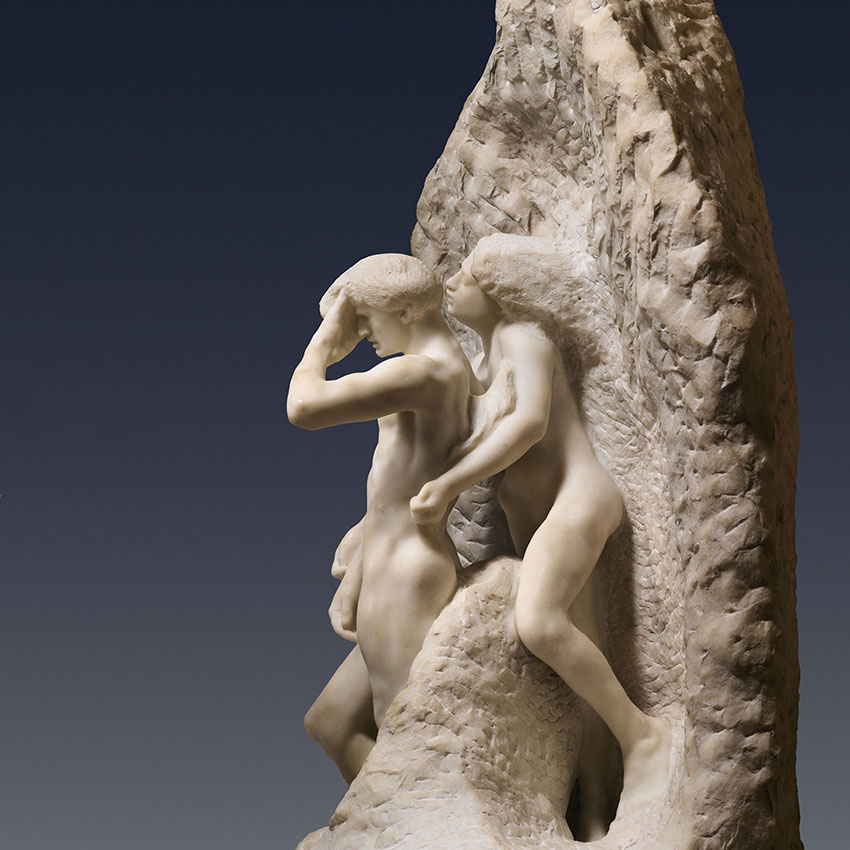Rodin at the Met is a death centennial exhibition of works by renowned French sculptor Auguste Rodin (The Thinker) from the Metropolitan Museum of Art’s permanent collection. The exhibition runs from September 16, 2017 – January 15, 2018.
Auguste Rodin is the Father of Modern Sculpture
François Auguste René Rodin was born in Paris, France on November 12, 1840. He died in Meudon, a suburb of Paris, on November 17, 1917.
Rodin was the greatest artist of his era. The emotional aesthetics in his naturalist style broke the mold of traditionally heroic figurative sculpture.
In the same way that Impressionists moved to capture the light and feeling of their real world subjects, Rodin captured the emotions of his subjects through the play of light and shadow on roughly textured surfaces.
Rodin was a master of clay modeling. Plaster casts were used to capture otherwise ephemeral clay forms. Assistants then cast or carved Rodin’s compositions in various sizes and mediums.
Rodin was an early proponent of multiples. He was a early adopter of the factory approach to making art which culminated in Andy Warhol’s Factory of the 1960s.
Rodin’s most famous works are The Kiss (1889) and The Thinker (Le Penseur, 1902).
Rodin at the Met
Rodin at the Met is an exhibition of about 50 marble, bronze, plaster, and terracotta works. It is installed in the newly refurbished B. Gerald Canto Sculpture Gallery (gallery 800).
The exhibition features icon masterpieces such as The Thinker, The Hand of God, and The Tempest. It also uses drawings, prints, letters, and books to show the depth of the artist’s work.
The exhibition runs from September 16, 2017 – January 15, 2018.
#RodinatTheMet
For tickets, visit www.metmuseum.org

